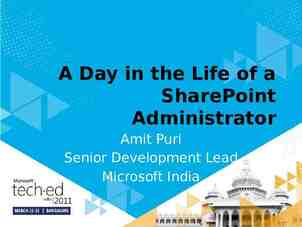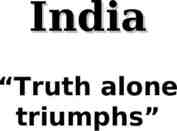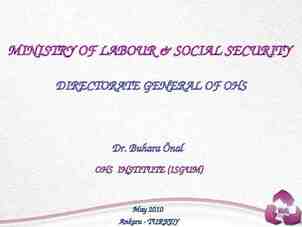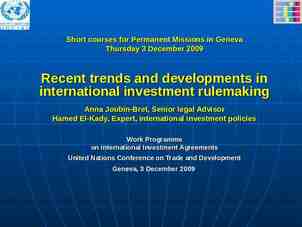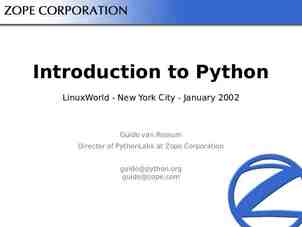PMCH 600 INDUSTRIAL HYGIENE October 22, 2007 R. Leonard Vance,
42 Slides9.25 MB
PMCH 600 INDUSTRIAL HYGIENE October 22, 2007 R. Leonard Vance, Ph.D., CIH
WHAT IS INDUSTRIAL HYGIENE IDENTIFICATION, EVALUATION, & CONTROL OF TOXIC SUBSTANCES & HARMFUL PHYSICAL AGENTS IN THE WORKPLACE & IN THE ENVIRONMENT
TOXIC SUBSTANCES – CHEMICALS – MICROBIOLOGICAL AGENTS HARMFUL PHYSICAL AGENTS – – – – NOISE RADIATION ERGONOMICS/REPETITIVE MOTION HOT & COLD ENVIRONMENTS
Occupational Health Team Occupational Physicians - Dr. Compton Industrial or ”occupational” Hygienists Occupational Health Nurse Microbiologist Engineers Safety Personnel Ergonomists Chemists & Lab Personnel radiation, toxicology, epidemiology
Industrial Hygiene Subject Matter What, How much, What is to be done? Identification of Hazards – experience – study – defined by client Evaluation of Hazards – Monitoring: sample collection & analysis Control of Hazards – engineering, admin., work practices, PPE
Typical IH Problems Survey flooded building for mold Health Hazard Survey in factory Indoor Air Quality (IAQ) evaluation Monitor asbestos/Pb removal at VCU Lead Inspection - adult/child protection Noise survey, printing plant OSHA/EPA Compliance consultation
Chemical Exposures Dusts – Asbestos, silica Volatile organic compounds – Benzene, ethylene oxide Metals – Pb, Hg Pesticides/herbicides
Exposure Limits OSHA PEL’s (permissible exposure limits) OSHA STEL’s (short term, 15 minutes) OSHA ceilings (instantaneous limits) OSHA BEI’s (biological exposure indices) ACGIH TLV’s (threshold limit values)
The Legal Framework OSHA Standards PEL Permissible Exposure Limit STEL Short Term Exposure Limit Monitoring Methods of Control Respirators Hazard Communication Medical Surveillance Recordkeeping
OSHA BENZENE STANDARD Permissible Exposure Limits – 1 ppm; 8 hour TWA – 5 ppm 15 min. STEL Monitoring Methods of Control Respirators Medical Surveillance – Next slide Hazard Communication Employee Notification Recordkeeping
OSHA Benzene Standard on Web osha.gov/pls/oshaweb/owadisp.show document?p table STANDARDS&p
MONITORING Air Monitoring – – – – personal area real time Laboratory Analysis Noise Lead - XRF Radiation Hot & Cold
Methods of Control Engineering Controls Administrative Controls Work Practices Personal Protective Equipment
Engineering Controls
Negative pressure containment
Administrative Controls Employee Rotation Ergonomic Hazards Noise Lead Carcinogen Issue - Prohibition
Work Practices
Personal Protective Equipment Respirators Protective Clothing Protective eyeglasses, shoes, etc. Hardhats
Respirators Quarter Mask Full Facepiece Half Mask Mouthpiece/Nose Clamp (no fit test required)
RESPIRATORS Use & Limitations Selection Protection Factors IDLH Atmospheres Fit testing, Fit factors Written Respirator Program
Hazard Communication Placarding & Labeling Material Safety Data Sheets Training & Education Chemical List
Medical Surveillance Done by MD, nurse, audiologist need to know – what exposed to – levels of exposure - IH role various medical tests – pulmonary function tests – blood lead levels, etc.
Hot & Cold Environments
ETHICS IH WORKS FOR, REPORTS TO, & IS PAID BY EMPLOYER. DUTY: PROTECT WORKERS CONFLICTS INEVITABLE
Issues Who will determine whether to sample who will sample where will samples be collected who will analyze who will determine what is to be done methods of control
Board Certification: “CIH”
Some Statistics Accidents [unintentional injuries], annual, US – – – – 20,000,000 disabling injuries 100,000 deaths 500,000 hospitalizations 4,000,000 ER visits
Why Learn about IH Prevent injury and illness! Why learn about public health? Protect Safety & Health of Workers/Public Deal with public concerns/hysteria Avoid Liability Promote Harmony; Reduce Acrimony – – – – workers management community government
References www.aiha.org www.acgih.org www.abih.org www.osha.gov www.cdc.gov.niosh The Occupational Environment - Its Evaluation, Control, and Management; DiNardi, S. R. , Ed.; AIHA, 2003; “White Book”










































